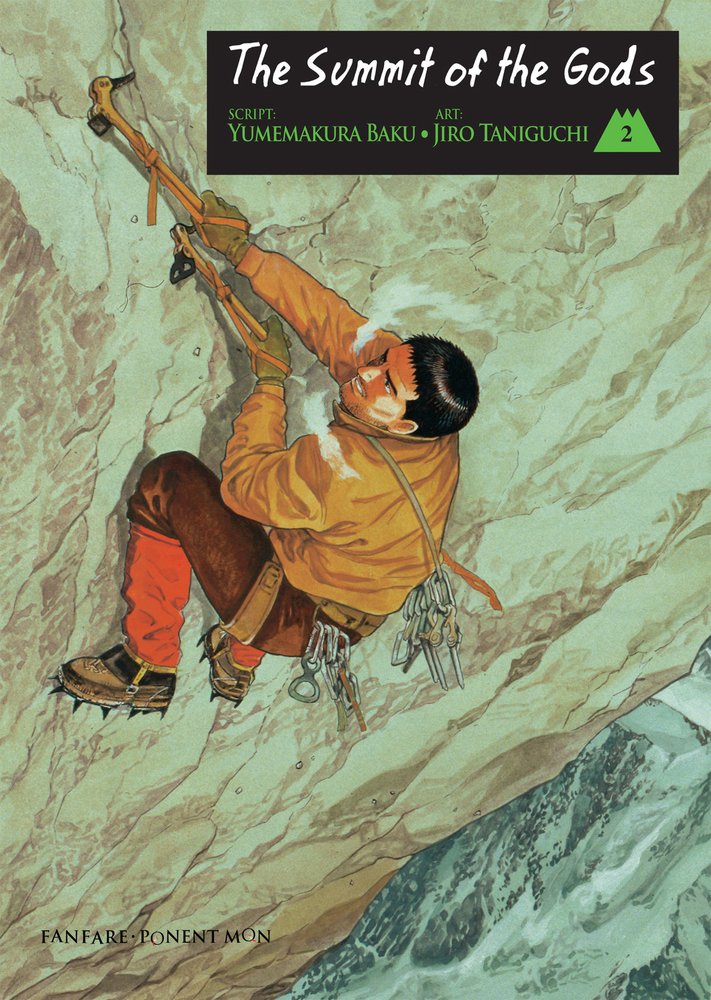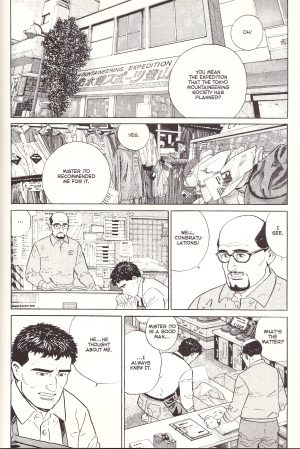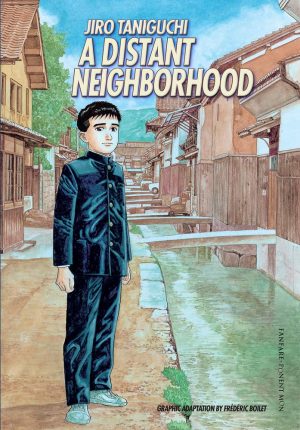Review by Ian Keogh
On hearing that someone has climbed one of the planet’s major mountains most people are able to recognise the achievement, but without any true sense of what it’s taken to reach the summit. Very few people can actually appreciate exactly what it takes. However, in The Summit of the Gods, Yumemakura Baku and Jirô Taniguchi open the door slightly.
Jouji Habu’s story continues from The Summit of the Gods 1, the intuitively talented climber determined to conquer a difficult peak solo during winter, and roughly the first third of the book shows how hubris leads to disaster and almost death. Taniguchi’s art amazes at showing the sheer scale of man against mountain, yet never by the shortcut of a black dot on a glacier. How many of us would be prepared to bivouac beneath an overhang in freezing temperatures and biting winds? We see that process, and then dozens of excruciating pages as Habu falls and hangs over a drop of several thousand feet with a broken arm and leg, only the rope and the peg it’s run through preventing instant death. We know Habu survives because he’s been seen in the present day, but what he experiences before rescue is presented exceptionally powerfully.
The manner in which Baku rolls out his plot is thoroughly professional. Habu’s story is so compelling it’s seemed photographer Makoto Fukamachi’s only purpose was the means of dragging readers into that story and continuing an investigation. However, the narrative moves back to Fukamachi, revealing he has his own demons to contend with.
Taniguchi’s art is again stunning, very disciplined when it comes to telling the story, but also incredibly detailed. Just like the mountaineers in the story, Taniguchi’s work ethic never permits the easy route. In story terms, the sample art is just a page setting up an expedition. It’s the conversation that matters, which could have been drawn in any number of ways. Most other artists would have compressed it into a single page, and almost guaranteed no other artist would have provided the interior of an equipment store in the manner that Taniguchi does in the second panel. His obsession is always providing the complete location, and coupled with his fine line and delicate inking it makes for stunning pages.
As Fukamachi talks with more people who have known Habu he becomes a more rounded character, other sides of his personality revealed, and Baku continues to explain extremely difficult decisions mountaineers take. Even when conditions are not inhospitable it isn’t just a matter of forging onward as so many factors must be considered. It’s all eye-opening to non-climbers. Part of those considerations is a climber’s temperament, and for all his talent and willingness to work, it’s what always betrays Habu.
The Summit of the Gods 2 relates a number of mountaineering expeditions, with tragedy dogging a few of them, reinforcing why serious climbers leave wills before attempting some peaks. After the trauma of the opening chapters it’s more a passage of anecdotes and clues followed, so transitional events, but page-turning and so well drawn. It sets up The Summit of the Gods 3 by having events force Fukamachi toward a decision and returns to the mystery starting the first volume.





